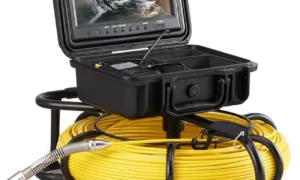According to the most recent report by Emergent Research, the size of the global space mining market is anticipated to reach USD 8.19 billion in 2030 and record a consistent revenue CAGR of 23.5% throughout the projected period. The expansion of the space mining industry’s revenue is anticipated to be fueled by ongoing investments in space exploration and mining, the launch of upcoming space missions, and growing backing from governments all over the world. Government actions to create rules regarding space mining are anticipated to assist future market revenue growth.
Finding and removing precious minerals, metals, and other materials from asteroids and other space objects is the goal of space mining. For decades, the rapid depletion of Earth’s natural resources has fueled ambitions and plans to mine space in order to obtain critical materials as well as to profit from the vast riches. This important element is anticipated to significantly fuel market revenue expansion in the coming years. Despite the high cost of capital, space mining is increasingly being used as a last resort when Earth’s resources run out. Government programs like the US military branch and the Space Force, which mandate that astronauts will return to the moon by 2024, are anticipated to boost the market to a significant extent. The Artemis Accords, a global legal framework for moon mining, is another illustration. The program encourages people to mine the natural satellite of the Earth and other celestial bodies for financial gain.
According to NASA, the worth of the minerals found in the belt of asteroids between Jupiter and Mars is USD 100 million per person. This is motivating businesses to engage in space mining so they can profit from the resources obtained. Near-Earth asteroid collection could cost USD 492 million while moon mining will initially cost roughly USD 9 billion. The prohibitive cost of space mining is now a major barrier to expansion.
Future developments in the space mining market will bring about more attractive mergers, alliances, and partnerships amongst key players in the sector. For instance, NASA, a leader in commercial space mining, awarded four business contracts in 2020 to recover small amounts of lunar regolith by 2024. Mining in space is best done on the Moon. It has a number of benefits, including being nearby and having low gravity, which means that launching would require less energy. The necessity for long-term investment in such operations and the high expense of space mining, however, are limiting business growth. When the cost of space launch decreases, market growth is to be anticipated to rise.
Download Free Sample Report of Space Mining Market: Click Here
Some Key Highlights From the Report:
Deep Space Industries (DSI) was acquired by Bradford Space, a company that deals in space technology, on January 1st of this year. The satellite bus for Xplorer, which is intended for trips beyond Earth’s orbit, is currently being developed by DSI, now known as Bradford Space Inc. DSI offers innovative space exploration solutions that are affordable.
Throughout the projected period, it is anticipated that Type C segment revenue will grow steadily. Because this sort of asteroid has water, which can be used to make rocket fuel and be delivered to companies performing space missions, mining efforts are anticipated to be focused there first. Materials from Type C are also available in organic and metallic forms and can be used to build spaceships in orbit.
Since a single asteroid can contain anywhere between USD 25 and $50 billion in platinum, it is anticipated that asteroids will be mined for the metal. Additional metals including cobalt, iron, gold, nickel, and manganese are also included in this, which could assist to lessen Earth’s metal shortage. Currently, NASA is carrying out a programme to gather samples from near-Earth asteroids (NEA).
Because China and Japan are paying more attention to starting mining activity, market revenue in the Asia Pacific region is anticipated to develop quickly over the course of the forecast year. China will launch its first batch of asteroid prospecting spacecraft in 2020, marking a significant advancement in the country’s space exploration.
Moon Express, Kleos Space S.A., Bradford Space Inc., Ispace, Planetary Resources, NASA, the China National Space Administration, Trans Astronautica Corporation, Shackleton Energy Company (SEC), and Asteroid Mining Corporation Ltd. are a few of the notable firms mentioned in the market study.
Emergen Research has segmented the global space mining market on the basis of type of asteroid, phase, type of commodity, application, and region:
-
Type of Asteroid Outlook (Revenue, USD Billion; 2018–2028)
- Type C
- Type S
- Type M
- Others
-
Phase Outlook (Revenue, USD Billion; 2018–2028)
- Spacecraft Design
- Instruments
- Altitude Control System
- Electric Power System
- Others
- Launch
- Operation
- Spacecraft Design
-
Type of Commodity Outlook (Revenue, USD Billion; 2018–2028)
- Water
- Structural Elements
- Platinum Group Materials
-
Application Outlook (Revenue, USD Billion; 2018–2028)
- Construction
- Extra-terrestrial Commodity
- Fuel
- Human Life Sustainability
- 3D Printing
-
Regional Outlook (Revenue, USD Billion; 2018–2028)
- North America
- U.S.
- Canada
- Mexico
- Europe
- Germany
- U.K.
- France
- Spain
- BENELUX
- Rest of Europe
- Asia Pacific
- China
- India
- Japan
- South Korea
- Rest of APAC
- Latin America
- Brazil
- Rest of LATAM
- Middle East & Africa
- Saudi Arabia
- UAE
- Israel
- Rest Of MEA
- North America
Browse Full Report with Facts and Figures of Drone Space Mining Market Report @ Visit































